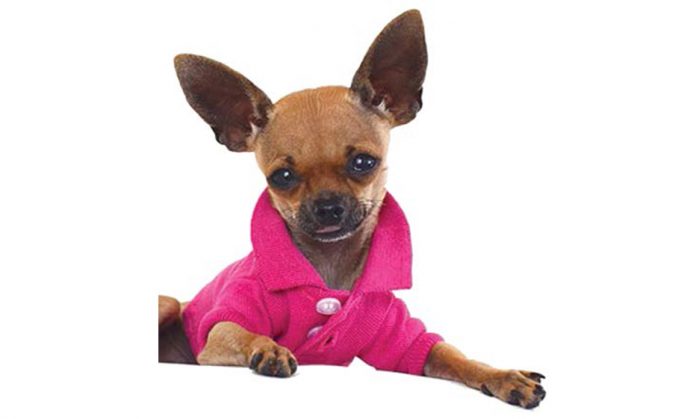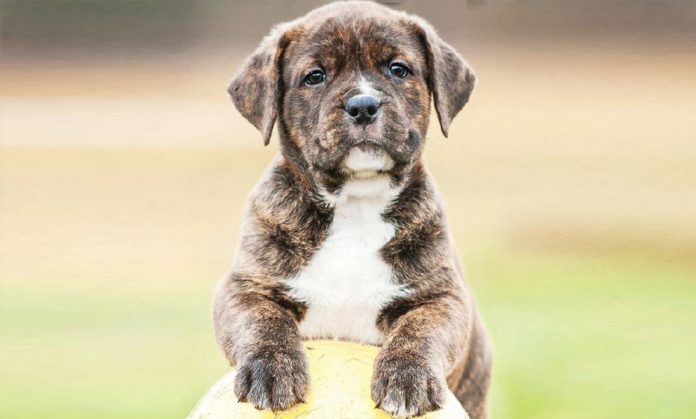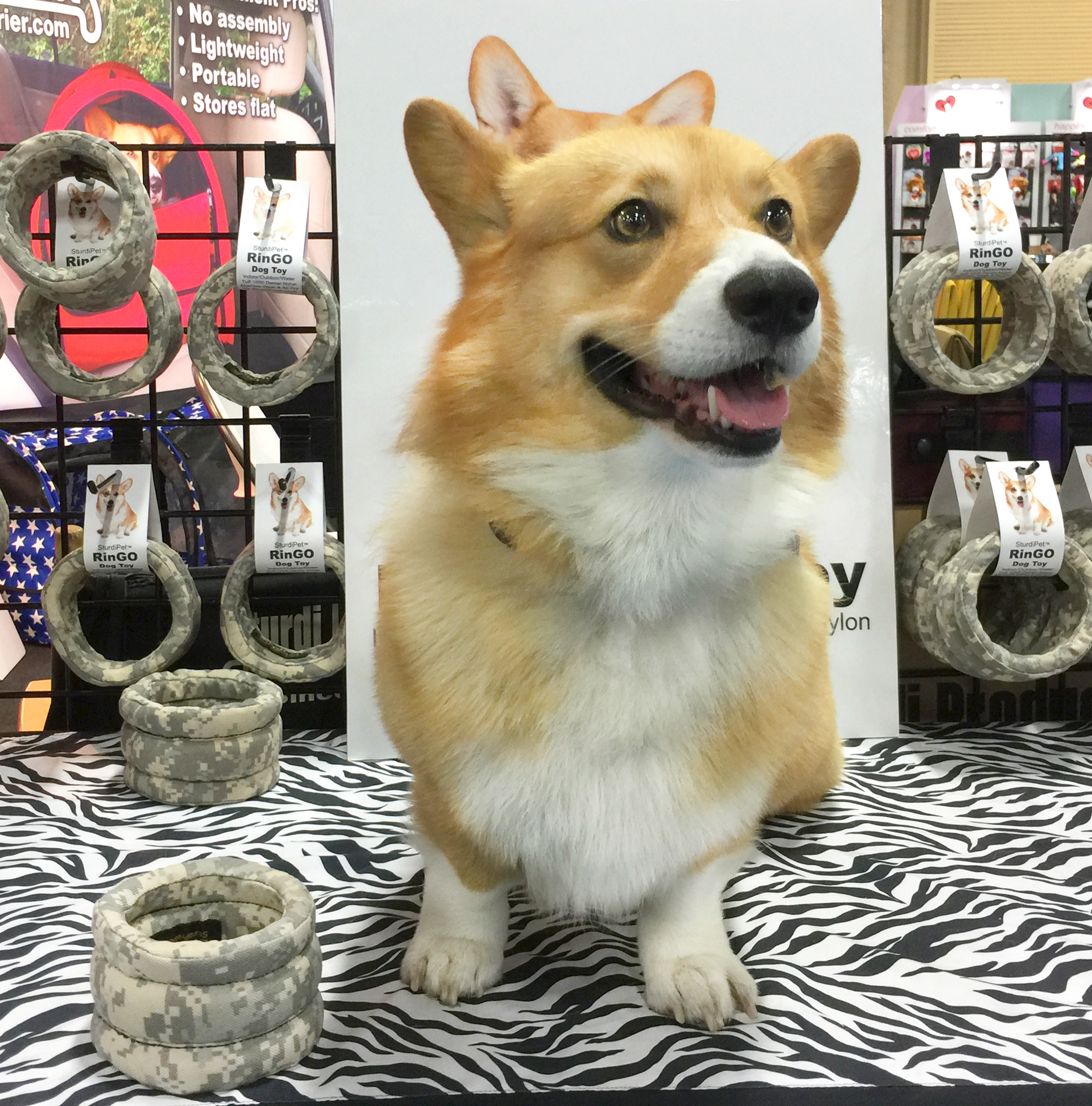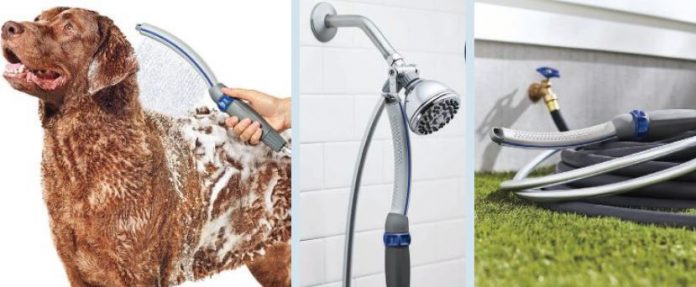Understanding Coyotes
For many of us, coyotes are the most recognizable wild mammals in the Coachella Valley. Whether they instill anger, fear, admiration, or just interest, we know they are out there. Most pet owners realize that coyotes pose a threat to dogs and cats, but may not appreciate when or why. This article opens the book on coyotes, in the hope that with better understanding we can achieve a level of coexistence that minimizes the danger to our pets.

Canis latrans
Coyotes (Canis latrans) are wild members of the dog family (Canidae) and are found only in North America. They usually weigh between 20 and 40 pounds, with females being slightly smaller than males. They tend to live in small family groups but sometimes travel alone and occasionally in loose packs with multiple family units. One of their most recognizable features is the wide range of vocalization they use to communicate. Howling, usually between lone individuals, and yipping, which occurs when members of a pack re-unite, are the loudest, and are the cries we most often hear.
Before the colonization of Europe, coyotes were believed to range only on the western prairies and dry southwestern areas of North America, including Mexico. (The term ”coyote” is derived from a similar word in the language of the Aztecs.) Other than people, their natural enemies are wolves and mountain lions. But where human encroachment has significantly reduced populations of wolves and mountain lions, coyotes have thrived. They are one of the few native species that have actually expanded their range since the onset of European settlement, and now extend over most of the entire continent, from Alaska to Panama. As a species, they are very resilient. People have tried to eradicate them for decades from many livestock-producing areas, sometimes with government support, and have never completely succeeded.
Behavior and Feeding
With a basic understanding of their habits, we can make a few predictions about when and where our pets are most likely to encounter coyotes. In general, they are most active around dawn and dusk, although at certain times of the year, when food is scarce, or during breeding season, they may be seen at any time of the day. The breeding season begins in January and ends in March, a time that brings a higher number of coyote sightings, as adults wander more freely, seeking partners. This is also a time when coyotes may act territorially and potentially more aggressively toward dogs, even larger ones.

Once paired, coyotes are strongly monogamous. Usually, only one alpha male and one alpha female within a group will breed, and they form the heart of a family unit that protects a defined territory. Unattached adult or yearling males often wander the fringes of established territories. Because territorial boundaries often follow recognizable landscape features, like roads or washes, we’re more likely to see coyotes in those areas.
Following breeding and a gestation of about two months, coyotes give birth to 4 to 9 pups in an underground den, most often dug beneath rocks, trees, or dense shrubs, but sometimes in the expanded dens of other animals in open areas. Weaning occurs roughly six weeks later, which puts pressure on adult coyotes to hunt more to provide food for their growing families, and means that early summer can be a time of heightened risk to our pets.

Coyotes eat a variety of foods. In fact, their adaptability in feeding is one of the keys to their success. They prefer animal meat, including rabbits, rodents, deer, birds, reptiles (even rattlesnakes), amphibians (except toads), fish, invertebrates, and insects. They will also eat fruits, vegetables, and sometimes grain. They are opportunistic and resourceful, and without access to human environments, have been known to kill and eat bobcats, as well as foxes. So, while not a desirable activity from our point of view, it is instinctive for coyotes to hunt domestic cats and small dogs, and we must expect such behavior to continue.
Our challenge lies in finding ways to eliminate their access to our pets. Cats should stay indoors, especially at night, and small dogs should be leashed and never left unattended, unless they are in a yard secured by a six-foot fence that extends underground by at least six inches. It is never a good idea to feed coyotes. It brings them into contact with us, creates an association based on food, and leads them to overcome their natural fear of people. Our best protection relies on maintaining separation from coyotes, and we should refrain from all activities that invite them into our midst. In the same vein, avoid leaving pet food outside, especially at night. Pick up fruit and fallen birdseed under feeders, and remove debris or brush that might harbor rodents. Also, for anyone feeding feral cats, remember that coyotes may be drawn to both the food and the cats, so place feeding stations carefully to avoid drawing them near households.
As with most wildlife, peaceful coexistence between coyotes, humans, and pets relies on minimal contact. Many of us have seen the sad outcome a coyote encounter can bring. It’s a tragedy we never want repeated, but the risk is going to remain because coyotes will continue to live among us. We probably couldn’t get rid of them, even if we tried, so we might as well get to know them better. Our protection strategies should start with increased awareness.
VCA Rancho Mirage Animal Hospital located at 71-075 Highway 111, Rancho Mirage, CA. 760-346-6103. Visit www.vcaranchomirage.com
Fall Fashion: Boogie’s Top Picks
Let’s face it, we dogs need to look and feel good when we’re lounging around the house, posing for selfies or taking our humans on outdoor adventures. Luckily, I got a sneak peek at some of the hottest items on the market when I attended SuperZoo this year. I’ve put together a list of the most comfy, cozy, safe, durable and stylish items you and your human need to continue living your best life.
Bone Vivant Sidney T-Shirt

Luxuriously soft and eco friendly, the Sidney T-shirt by Bone Vivant (BV) is a must-have for dogs of all sizes. Handmade in Los Angeles from up/recycled materials, this lightweight, breathable t-shirt with signature velvet trim is perfect for shielding the sun or keeping your pup warm on cool summer nights. The Sidney T-shirt is long sleeved, but BV offers a variety of shirts in tank styles as well.
Bone Vivant was created out of necessity for a little Pomeranian named Napoleon. Napoleon developed Alopecia X, causing him to lose most of his hair, and during that time he always needed to wear clothes to protect him from the elements. His parents, founders Kenny and Wendi Tanner, couldn’t find clothes they loved or that were comfortable enough for him, so they created their own. Bone Vivant is located in Malibu, California, but ships worldwide. bonevivant.com
Pooch Outfitters Neckties

If you know me, you know I love bow ties! So I was thrilled to meet the folks of Pooch Outfitters in person and see that their shirt collar and bow tie selection is still growing. They have so many new designs, it’s impossible to pick a favorite. Based in Santa Monica, California, Pooch Outfitters is dedicated to creating a line that keeps up with the lifestyle of today’s trendy pooches. Their fun and modern designs are of excellent quality and made to last. poochoutfitters.com
Klippo Pajamas

Dog pajamas have been pretty popular for a while and it’s a trend that isn’t going away any time soon. Klippo makes adorable and soft pajamas in super cute and hip prints. Each pair is accented with two functional pockets—good for hiding those late-night snacks! A small D ring is also attached to the top snap to attach your ID tag or Klippo charm (each pair comes with a Klippo charm). My favorites are the yellow duckies and the monkey fleece pajamas shown here, but they have new designs coming out all the time, so I’m sure I’ll have some new favorites soon! Visit the Klippo website for a full list of retailers. Who’s ready for a pajama party? klippopet.com
Gold Paw Series Rain Paw Jacket

The Rain Paw jacket by Gold Paw Series is an elegant, all-season rain jacket in a fabric you won’t find anywhere else. Skip the excess seams, flaps, draw cords, Velcro and zippers in favor of a beautifully draped, easy-fitting design that provides a perfect balance of coverage and freedom of movement. Gold Paw’s exclusive stretchy, water- and windproof Suppletec™ is non-toxic and moves with your dog, eliminating gaps and rubbing. The Rain Paw is made in California of recycled and non-toxic materials, has reflective webbing, is machine washable and is now available in five new colors in the following sizes: 10/12, 14/16, 18/20, 22/24 and 26/28. Running around town with your human on a rainy day is going to be no problem this year! goldpawseries.com
Chilly Dog Sweaters

Weekend getaways to the mountains mean you’ve got to stay warm and look good doing it. While your humans are out shredding it on the mountain, you can be lounging on the sofa, enjoying a bone in front of the fire, wrapped in your Chilly Dog Sweater. These thick, 100% wool sweaters are handmade by Inca Artisans in South America, can fit sizes from teacup to Great Dane, and have designs for every style. I personally love the Nordic design, but there are so many designs you are sure to find one that fits your style. Don’t get left out in the cold! chillydogsweaters.com
K-9 Sport Sack

The K-9 Sport Sack was created so your pet could tag along on adventures comfortably and safely. As seen on the TODAY show, the K-9 Sport Sack makes bike rides, motorcycling, hiking, shopping and anything else you can think of a whole new experience with your best friend riding on your back. Made for dogs up to 30 pounds, the ergonomic design envelopes your pooch for a comfy ride, and the straps and D-ring hookup ensure your dog cannot jump or fall out. k9sportsack.com
Messy Mutt Silicone Feeder

Messy eaters, unite! The folks at Messy Mutt have designed a bowl that lets you chow down like a beast without the messy clean up for your human. The Silicone Feeder has a non-slip silicone base that prevents damage to your floors, holds the stainless steel bowl in place and contains messes with the wide lip and raised-edge border.
The Messy Mutts Silicone Feeder is made from food-grade silicone, BPA- and PVCfree and dishwasher safe; it can be used indoors or outdoors; and it comes in stylish colors that match your home. Let’s eat! messymutts.ca
Ultra Paw Grip Socks

You and your dog are going to love these socks! The Ultra Paw Grip Socks are one of a kind because they don’t have the interior threads that other patterned socks do, which means they never snag on your dog’s claws. They come in vibrant, colorful patterns that were designed exclusively for Ultra Paws, and they have a generous swirl of silicone on the bottom for traction. They’re great on their own for traction and warmth, or they can be worn with any of our boots for added warmth in cold conditions. Dog socks can be a great item to have on hand for dogs who have trouble walking on tile or uncarpeted surfaces (like me), or have a paw injury that needs to heal safely. ultrapaws.com
JCLA Diamond Cut Bag

Just because your dog is always by your side, it doesn’t mean everyone has to know. You don’t have to sport a bag with telltale mesh across the top and sides any more. The JCLA Diamond Cut De-LUXE Carrier will shield your pup from adoring fans with a one-way glass effect (your pup can see out, but people can’t see in). The Diamond Cut De-LUXE is designed to mimic a regular handbag, made from vegan leather, and roomy enough to carry a dog weighing up to 17 pounds (or two smaller dogs). The Diamond Cut bag has adjustable straps, removable and washable interior plush cushion, two leash clips for pup safety, and three pockets for your personal belongings. jclaboutique.com
So You Think You Want A Snake
Although definitely not for everyone, snakes can make an excellent addition to any family. Personally, I have kept snakes as pets since I was a small child, in a variety of species, including garter snakes, Burmese pythons, and even venomous species. While I definitely do not advocate keeping dangerous species of reptiles without the proper experience required, the majority of snakes are completely harmless and can make excellent pets. If you are considering purchasing a snake for yourself or a family member, here are a few things to consider before making a commitment to looking after a scaled friend.

Species.
First and foremost, you need to decide what species of snake best fits your household. Snakes vary greatly, from the fast little fish-eating garter snake to the slow, gentle giant pythons—each species requires specific care.

Research, research, research!
I cannot stress enough the importance of researching the specific needs of a reptile species before purchasing. The majority of health problems I see in practice with reptiles are a direct result of improper husbandry (diet, lighting, humidity, etc.).
Your level of experience keeping reptiles.
If you are an entry-level reptile keeper, I recommend choosing a species that is relatively easy to take care of. For California, species like the local rosy boa or California king snake are perfect choices for beginners, as they do not require as much specialty lighting, heating, or humidity equipment.
Diet.
Snakes are obligate carnivores. That means you will be feeding them whole, dead prey. If you are not comfortable with this, then snakes are not the pet for you.

Every animal has the potential to bite, and snakes are no different.
The first time a snake bit me, I was surprised to find that the surprise/ shock was the worst part. Nonvenomous snakes have many small teeth designed for holding onto prey items, and they only bite people when they feel threatened, are being mishandled, or if they mistake your hand for a prey item. Overall, I would much rather be bitten by a small snake than a cat or a dog.
If you do decide to make a serpentine addition to your family, I also recommend making an appointment with a veterinarian who is comfortable treating reptiles and discussing their specific needs. There is a lot of misinformation out there, and it is much easier to correct husbandry problems before they cause health issues.
Village Park Animal Hospital is located at 51-230 Eisenhower Dr. in La Quinta. Village Park Animal Hospital also offers grooming services for dogs and cats. (760) 564-3833www.villageparkanimalhospital.com
Is Your Pet Gut-Healthy?
Gone are the days of buying just any pet food off the shelf without considering about the ingredients. Today, pet guardians are as concerned about what goes into their pet’s body as they are about what goes into their own. If we need super foods like quinoa, kale and blueberries to heal and supercharge our bodies from the inside out, then our pets must need them, too.
We know that fiber is important because it promotes the movement of food through the digestive system. However, new research shows that having a variety and blend of carefully selected fiber sources can produce an environment in the digestive tract that will help lead to an optimal balance in the gut. Prebiotics and probiotics are gaining a lot of attention as the “power duo,” the keys to a healthy gut, supporting intestinal health and the duties of the intestinal tract. So, what’s the difference between those two?
Prebiotics are a form of fiber that serves as “food” for probiotics. These are fermentable fibers, like dried kelp, dried chicory root and beet pulp, and resistant starches like legumes, such as peas and other beans.
Prebiotics are shown to reduce the duration of infectious and antibiotic-induced diarrhea, reduce inflammation and symptoms of certain diseases, optimize mineral absorption, and support weight loss.
Probiotics are the “good” bacteria and yeasts that help keep the digestive system healthy. These are live bacteria naturally found in the body but also found in some dairy products and fermented foods. Probiotics also promote weight loss, and they support digestive health and immune function.
“Until recently, the importance of the gut in overall health wasn’t fully understood,” says Joey Herrick, founder and president of Lucy Pet Products. “The latest nutritional advancements now show that the digestive tract goes far beyond just processing the food your pet eats. Just like in humans, it is very important to create a healthy environment in the gut, because it plays a key role in strengthening your pet’s immunity to chronic diseases.”
Digestive health is key to many other bodily processes, and the digestive system does more than process the food we eat or feed our animals. The gut is the largest immune organ of the body and affects every aspect of animal metabolism, as well as behavior, mood, and cognition. Thousands of bacteria live in the gut and each has a unique role.
Your pet’s intestinal tract handles challenges every day, so it is important to ensure that your pet’s diet supports the digestive system based on the latest nutritional advancements that exist today. A diverse blend of dietary fibers provides optimal nourishment for the large bowel bacteria. These bacteria ferment the fibers to short-chain fatty acids that vary in concentration and molar proportions and serve many positive functions, not only in the large bowel but also throughout the body.
Lucy Pet Products founder Joey Herrick has partnered with Dr. George C. Fahey, who has conducted extensive research for over 40 years on gastrointestinal tract health and the role of macronutrients in digestive physiology and health of the gut.
Dr. Fahey has pioneered research on companion animal health and nutrition. He discovered the optimal sources and concentrations of dietary fibers in pet food, including identification of the relationship between fiber ferment ability, nutrient digestibility, and digestive tract upset, and prebiotic efficacy in dogs and cats.

Dr. Fahey’s extensive fiber research and findings are the basis of Lucy Pet’s P.B.F. Prebiotic Balanced Fiber™ technology. These industry-leading formulas for dogs and cats promote good gut health, which helps the body absorb nutrients more efficiently and plays a key role in natural immunity.
“Our foods are made with truth in labeling, honesty in formulations, the latest in scientific research, and attention to detail,” added Herrick. “I love all my animals, and I would never want to be in a position where they weren’t healthy because I wasn’t feeding them the best food possible. And that is the driving force behind everything that we do here at Lucy Pet Products.”
Lucy Pet Formulas for Life™ with P.B.F. Prebiotic Balanced Fiber are created using high-quality proteins, a unique blend of quinoa, pumpkin, and chickpeas, for an ideal balance of beneficial bacteria in the gut. Herrick sources high-quality ingredients, like duck and wild-caught Alaskan salmon globally from trusted suppliers, and Lucy Pet products are always manufactured in the United States with absolutely no ingredients coming from China.
Superzoo 2017 We Miss You Already.
What happens in Vegas doesn’t stay in Vegas. At least when our pets are involved! The Pet Companion Magazine team attended Superzoo 2017 looking for the newest trends and innovations in the pet industry. We found that companies are putting your pet’s health and wellbeing at the top of their priority list, just like you. Food, supplements, grooming care, toys, beds have your pet’s particular health need in mind.
We saw some super cute trends that are sticking around, and hunted down a few new ones. Feasted our eyes on some innovative products, great gift ideas for the pet lovers in your life, met a few celebrity pets and had a lot of fun.
We’re excited to share a few of our finds in our Fall & Winter issues. Until then, here’s a quick peek at a few of our favorite things from Superzoo 2017. Enjoy!
SuperZoo2017_PCM2 from PetCompanionMagazine on Vimeo.
Are You a DIY Dog Bather?
Two new products were introduced recently, making bathing your pet at home a little easier for both you and your furry friend. Both showerheads can be attached to your indoor or outdoor faucet.

Pet Wand Pro by Waterpik™
Take the stress out of bath time and give your dog a gentle but thorough wash, inside or out. With Waterpik’s new Pet Wand PRO, your dog will feel much more relaxed and comfortable during the bathing process. The shower attachment fits on a standard shower head pipe indoors or on your garden hose outdoors. It has a professional-grade contoured wand that sprays a unique water “comb” which provides maximum cleaning coverage and power—both important for rinsing thick fur. The targeted narrow spray is perfect for hard-to-reach or sensitive areas, making this tool perfect for dogs of all sizes. The dial allows you to customize the water pressure and control the spray settings, even with one hand.
Key Features:
■ Unique contoured shape designed to wash dogs of all sizes and types
■ Full-coverage WaterComb™ spray for maximum cleaning power
■ Indoor and outdoor adapters included
■ Extra-long 8-ft flexible hose for extended reach
■ Suction cup hanger included for hands-free bathing
■ Limited lifetime warranty
Pet Wand PRO cuts down on both the time and the stress involved in do-it-yourself pet bathing. For more information and to get your Pet Wand PRO, visit: pets.waterpik.com.

AquaPaw
The Aquapaw Bathing Tool, is based around an entirely new bathing system that combines your water sprayer and a rubber scrubber into an intuitive bathing glove. Visit www.aquapaw.com


